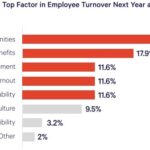Deciding whether to lease or buy a new car is a significant financial decision. Many people find themselves wondering about the best approach, especially when it comes to leasing. It’s a common misconception that leasing is always more expensive, but understanding the nuances can reveal when a car leasing program might be the smarter choice. Let’s break down what truly makes a car leasing program beneficial and how to determine if it’s the right path for you.
One of the first things to grasp is vehicle depreciation. Whether you lease or buy, a new vehicle immediately enters its steepest depreciation phase as soon as it leaves the dealership. This initial drop in value is the most substantial financial hit you’ll take on a new car. While the lease versus buy decision has some impact, the primary factor is simply owning or leasing a new vehicle. This is why some savvy car enthusiasts opt for “fart cars”—used vehicles with significant initial depreciation already absorbed, offering short-term transportation at a reduced cost while still retaining some of the automaker’s residual value principles.
The perceived “savings” often associated with car ownership come from extending the operational lifespan of a vehicle. For instance, when a lease concludes, purchasing the vehicle at its residual value and continuing to drive it can indeed be more economical than entering into a new lease. Similarly, someone who finances a car and keeps it for more than three years will generally fare better financially compared to someone who frequently trades in for a new vehicle every three years.
When comparing leasing and buying, especially for non-electric vehicles, a crucial point of comparison is the money factor (MF) in a lease versus the Annual Percentage Rate (APR) of a loan. If the money factor is significantly subsidized (very low, like 0.0015 or less in today’s market), and loan subventions are less favorable, leasing can offer a lower interest rate equivalent.
Even if the money factor and loan APR are comparable, leasing can still be advantageous. Lease payments are generally lower because they don’t require principal payments, unlike loan payments which build equity. While building equity might sound positive, in the context of vehicle ownership, that equity comes with an opportunity cost. The funds tied up in vehicle equity aren’t available for other investments or immediate needs. It’s important to remember that, at the end of a lease, you have the option to purchase the vehicle, essentially converting the lease into a financed loan if you wish to capture any potential equity upside. Conversely, if the residual value is lower than expected, you can simply return the vehicle. This optionality is a key benefit of leasing that isn’t available with buying; once you buy, you’re fully exposed to depreciation without the option to easily exit.
Optionality and lower opportunity costs are valuable aspects of leasing, making it a worthwhile option for the right individual. However, if the money factor on a lease is excessively high, leasing becomes less sensible. Conversely, very low money factors strongly favor leasing.
Electric vehicles (EVs) introduce another layer of complexity. Initially, government incentives like the $7,500 tax credit might seem to favor leasing. However, lease programs for EVs often incorporate higher money factors to offset these incentives (as seen with some Mazda and Volvo programs). In such instances, a strategy of leasing to initially capture the credit and then buying out the lease with a loan can be financially sound.
Furthermore, some EVs experience rapid depreciation, leading to “disaster” residuals, as observed with models like the Mercedes-Benz EQS and Audi e-Tron. In these cases, automakers often subsidize lease residuals. Leasing becomes particularly attractive here as it shields you from the risk of severe depreciation. Exposing yourself to such depreciation by buying might not be a prudent financial choice.
In summary, determining whether to lease or buy a new vehicle largely depends on comparing the money factor against the loan APR and considering how residual values might impact your specific situation. If long-term savings are your goal, operating a vehicle well beyond the typical lease term, whether leased initially or purchased, is generally the most effective strategy. To make an informed decision, utilize resources like lease calculators to compare lease versus buy scenarios, keeping in mind factors like opportunity cost and potential maintenance expenses over the vehicle’s lifespan.
